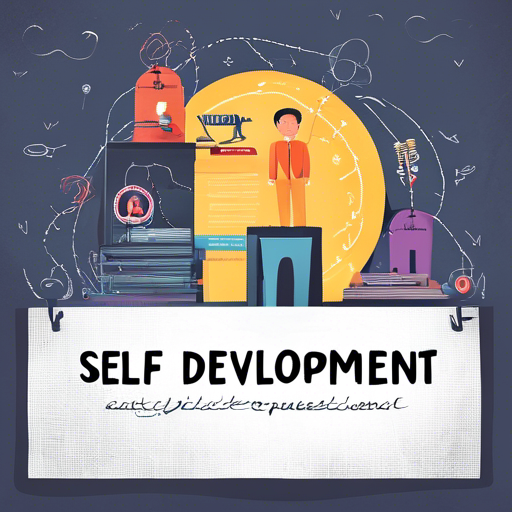Understanding Hair Loss: Causes and Types
Hair loss is a common concern that affects millions of people worldwide. It is essential to understand the causes and types of hair loss to effectively address this issue. Hair loss can occur due to various factors, such as genetics, hormonal changes, nutritional deficiencies, and certain medical conditions. The most common type of hair loss is known as androgenetic alopecia, which is hereditary and affects both men and women. Other types include alopecia areata, telogen effluvium, and traction alopecia.
Androgenetic alopecia, also known as male or female pattern baldness, is a gradual thinning of the hair over time. It is caused by a combination of genetic and hormonal factors. Alopecia areata, on the other hand, is an autoimmune condition where the immune system mistakenly attacks the hair follicles, leading to sudden hair loss in patches. Telogen effluvium occurs when there is a disturbance in the hair growth cycle, causing excessive shedding of hair. Lastly, traction alopecia is caused by excessive pulling or tension on the hair, often due to tight hairstyles.
Understanding the causes and types of hair loss is crucial in determining the appropriate treatment or remedies to reduce hair loss. By identifying the underlying cause, individuals can take proactive steps to address the issue and promote hair regrowth.
The Impact of Hair Loss on Self-esteem and Confidence
Hair loss can have a significant impact on an individual’s self-esteem and confidence. Our hair plays a vital role in our overall appearance and can be closely linked to our identity. Losing hair can lead to feelings of self-consciousness, embarrassment, and even depression. The psychological impact of hair loss can be particularly challenging for individuals who are young or experiencing early onset hair loss.
Many people rely on their hair as a form of self-expression and use it to project their style. Therefore, losing hair can make individuals feel like they are losing a part of themselves. This emotional toll can affect various aspects of their lives, including relationships, career opportunities, and social interactions.
It is important to recognize the emotional impact of hair loss and provide support to individuals experiencing this issue. By addressing hair loss proactively and exploring effective solutions, individuals can regain their self-esteem and confidence, embracing their natural beauty.
Hair Loss Statistics and Prevalence
Hair loss is a prevalent condition that affects both men and women worldwide. According to recent statistics, approximately 50 million men and 30 million women in the United States alone experience some form of hair loss. By the age of 50, approximately 85% of men will have significant hair thinning. Hair loss can occur at any age, but it becomes more common as individuals get older.
The statistics also show that hair loss can have a significant impact on individuals’ quality of life. Many people seek treatment or remedies to reduce hair loss due to the emotional distress it causes. With the advancements in medical technology and the growing awareness about hair loss, more individuals are actively seeking solutions to address this concern.
Understanding the prevalence of hair loss highlights the need for effective treatments and remedies. By recognizing the significance of this issue, researchers and experts are continuously working towards finding innovative solutions to combat hair loss and promote hair regrowth.
Medical Treatments for Hair Loss: Pros and Cons
Medical treatments for hair loss have come a long way in recent years. There are various options available that can help slow down hair loss and promote hair regrowth. However, it is important to weigh the pros and cons of these treatments before considering them as a solution.
One of the most common medical treatments for hair loss is the use of medications such as minoxidil and finasteride. Minoxidil is a topical solution that is applied directly to the scalp to stimulate hair growth. Finasteride, on the other hand, is an oral medication that helps reduce the production of dihydrotestosterone (DHT), a hormone that contributes to hair loss. These medications can be effective in certain cases, but they may also have side effects such as scalp irritation or sexual dysfunction.
Another medical treatment option is hair transplantation, where hair follicles are surgically moved from one part of the body to the balding area. This procedure can provide long-lasting results, but it is invasive and requires careful consideration.
It is essential to consult with a healthcare professional or a specialist in hair loss before considering any medical treatments. They can assess your specific situation and guide the most suitable options for you.
Natural Remedies to Reduce Hair Loss
In addition to medical treatments, there are also natural remedies that can help reduce hair loss. These remedies focus on promoting hair growth through the use of natural ingredients and lifestyle changes. While natural remedies may not provide instant results like medical treatments, they can be effective in the long run and have fewer side effects.
One natural remedy to reduce hair loss is the use of essential oils. Essential oils such as rosemary, lavender, and peppermint have been found to promote hair growth and improve scalp health. These oils can be mixed with carrier oils such as coconut or jojoba oil and massaged into the scalp.
Another natural remedy is the use of herbal supplements. Supplements like saw palmetto, biotin, and horsetail extract have been shown to have positive effects on hair growth and thickness. However, it is important to consult with a healthcare professional before starting any supplements to ensure they are safe and appropriate for you.
Additionally, adopting a healthy lifestyle can also contribute to reducing hair loss. Eating a balanced diet rich in vitamins and minerals, managing stress levels, and avoiding harsh hair treatments can all play a role in maintaining healthy hair.
Diet and Lifestyle Changes to Promote Hair Growth
Our diet and lifestyle choices can have a significant impact on the health of our hair. By making certain changes, we can promote hair growth and reduce the risk of hair loss. Here are some diet and lifestyle tips to consider:
- Ensure a balanced diet: Consuming a diet rich in vitamins, minerals, and proteins is essential for healthy hair. Include foods such as leafy greens, eggs, fish, nuts, and seeds in your diet.
- Stay hydrated: Drinking an adequate amount of water helps keep the scalp and hair follicles hydrated, promoting healthy hair growth.
- Manage stress: Chronic stress can contribute to hair loss. Practice stress management techniques such as meditation, yoga, or engaging in hobbies to reduce stress levels.
- Avoid harsh hair treatments: Frequent use of heat styling tools, chemical treatments, and tight hairstyles can damage the hair and lead to breakage or hair loss. Opt for gentler alternatives and give your hair regular breaks from styling.
By incorporating these diet and lifestyle changes into your routine, you can support the health of your hair and reduce the risk of hair loss.
Effective Hair Care Routines to Prevent Hair Loss
Maintaining an effective hair care routine is crucial in preventing hair loss and promoting healthy hair growth. Here are some tips to incorporate into your routine:
- Gentle hair washing: Avoid using harsh shampoos or washing your hair too frequently, as it can strip the hair of its natural oils. Use a gentle shampoo and conditioner and limit washing to a few times a week.
- Scalp massage: Massaging the scalp stimulates blood flow to the hair follicles, promoting hair growth. Use your fingertips to gently massage your scalp for a few minutes every day.
- Avoid excessive heat styling: Frequent use of heat styling tools can damage the hair and lead to breakage. Limit the use of heat styling tools and always apply a heat protectant before using them.
- Use a wide-toothed comb: When detangling your hair, use a wide-toothed comb to prevent unnecessary hair breakage.
- Avoid tight hairstyles: Hairstyles that pull tightly on the hair, such as ponytails or braids, can cause stress on the hair follicles and lead to traction alopecia. Opt for looser hairstyles that do not put excessive tension on the hair.
Incorporating these effective hair care practices into your routine can help prevent hair loss and maintain healthy hair.
Common Myths About Hair Loss Debunked
There are many myths and misconceptions surrounding hair loss. It is important to separate fact from fiction to make informed decisions about addressing hair loss. Here are some common myths about hair loss debunked:
- Myth: Wearing hats causes hair loss. Fact: Wearing hats does not cause hair loss. However, wearing tight hats for extended periods can lead to traction alopecia due to excessive tension on the hair.
- Myth: Hair loss is only genetic. Fact: While genetics can play a significant role in hair loss, other factors such as hormonal changes, medical conditions, and nutritional deficiencies can contribute to hair loss.
- Myth: Hair loss is only a problem for men. Fact: Hair loss affects both men and women. While men are more commonly associated with male pattern baldness, women can also experience hair thinning and loss due to various factors.
- Myth: Hair loss is irreversible. Fact: While some types of hair loss may be permanent, there are effective treatments and remedies available that can slow down hair loss and promote hair regrowth.
By debunking these myths, individuals can have a better understanding of hair loss and explore appropriate solutions.
Hair Loss Prevention for Different Age Groups
Hair loss can occur at any age, and the preventive measures may vary depending on the age group. Here are some hair loss prevention tips for different age groups:
- Young adults (20s-30s): Focus on maintaining a healthy lifestyle, managing stress levels, and avoiding harsh hair treatments. Regular scalp massages and a balanced diet can also help promote hair growth.
- Middle-aged adults (40s-50s): In addition to the above tips, consider consulting with a healthcare professional or a specialist in hair loss to explore suitable treatments or remedies. This is the age range where hair loss becomes more common.
- Older adults (60s and above): Embrace your natural beauty and focus on maintaining a healthy scalp and hair. Gentle hair care practices, a balanced diet, and regular check-ups with a healthcare professional are essential.
By tailoring hair loss prevention strategies to different age groups, individuals can effectively address the issue and maintain healthy hair throughout their lives.
Conclusion: Embracing Your Natural Beauty
Hair loss can be a challenging experience, but it is essential to remember that beauty comes in various forms. Embracing your natural beauty, regardless of whether you have a full head of hair or not, is the key to self-acceptance and confidence.
Understanding the causes and types of hair loss, exploring medical treatments and natural remedies, adopting a healthy lifestyle, and maintaining an effective hair care routine are all crucial steps in reducing hair loss and promoting hair growth. By addressing hair loss proactively and debunking common myths, individuals can regain their self-esteem and embrace their unique beauty.
Remember, hair loss does not define you. Embrace your natural beauty and let your inner confidence shine through.
CTA: Embrace your natural beauty and take steps to reduce hair loss today. Consult with a healthcare professional or a specialist in hair loss to explore suitable treatments or remedies. Incorporate natural remedies, adopt a healthy lifestyle, and maintain an effective hair care routine. Remember, your beauty is not defined by your hair. Embrace your uniqueness and let your confidence shine through.



